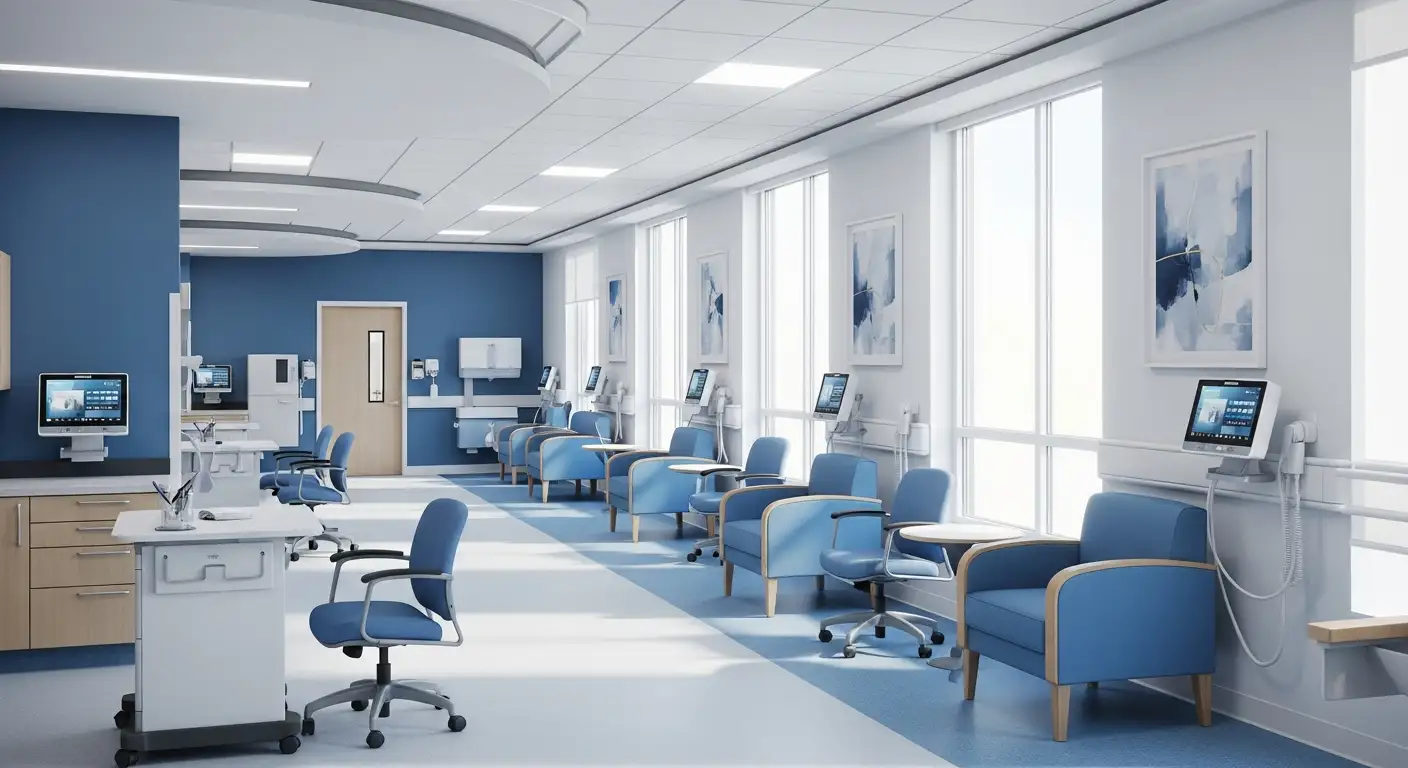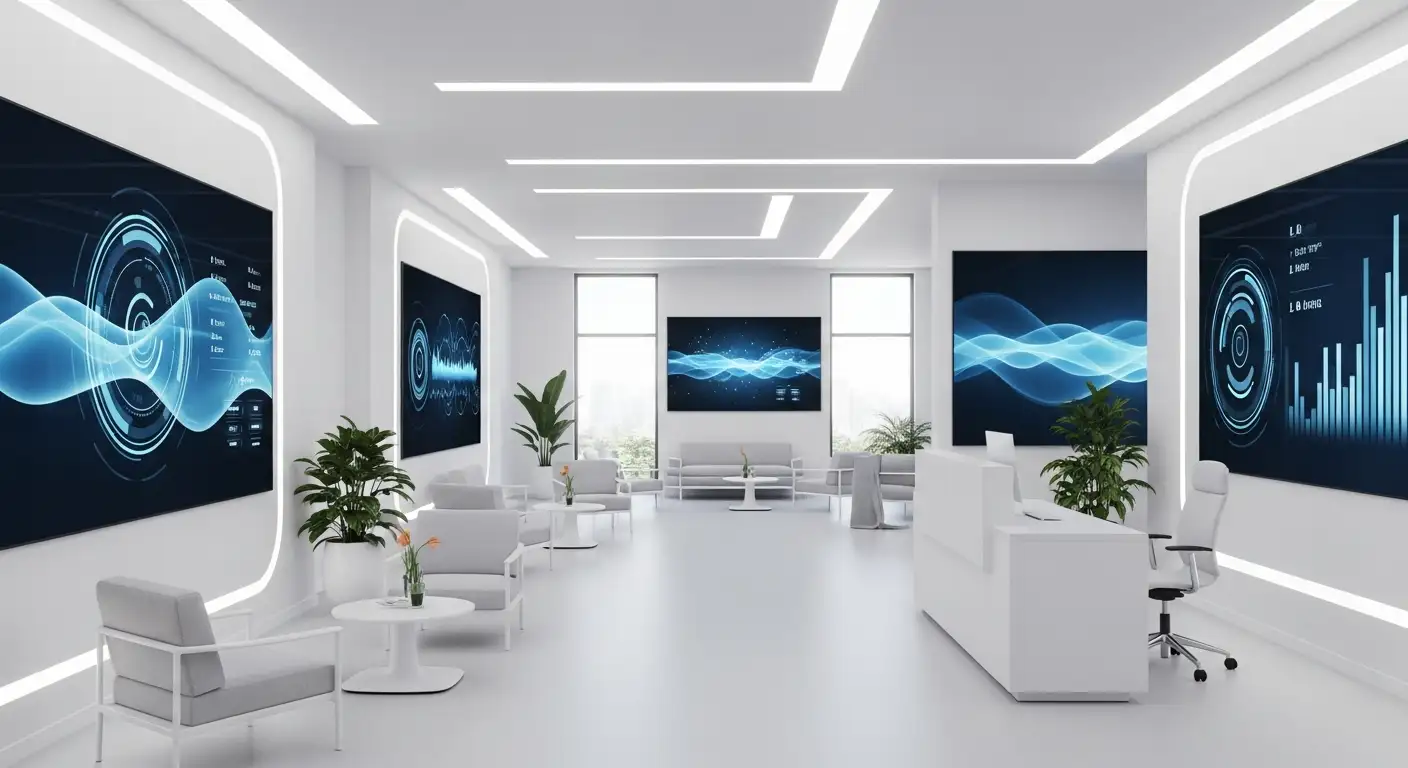Using Remote Monitoring to Prevent Missed Medications in Seniors
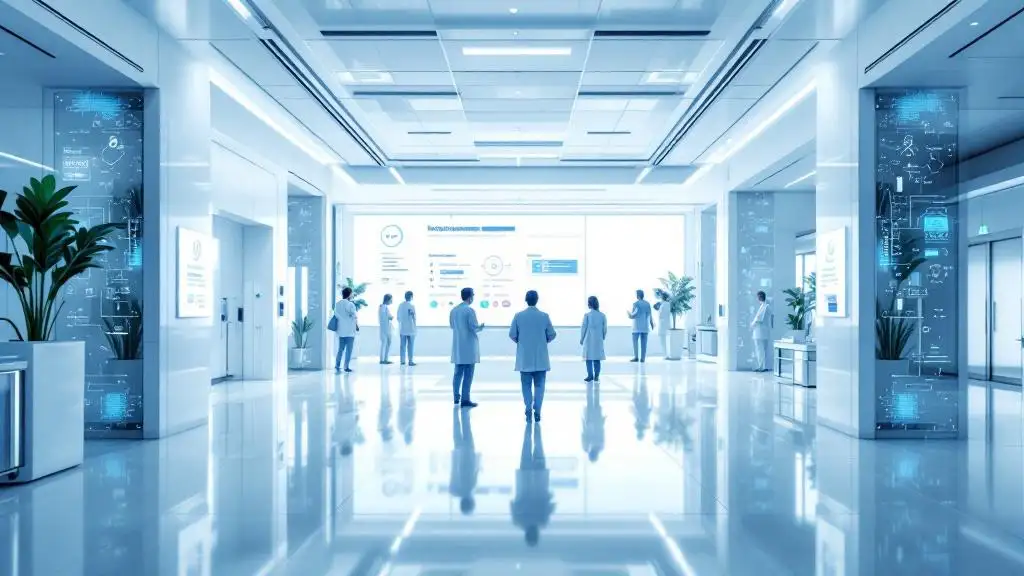
Revolutionizing Elder Care with Technology
As the elderly population continues to grow, so does the need for effective, safe, and convenient medication management. Remote monitoring technologies, integrating telehealth, digital tools, and connected devices, are proving to be invaluable in reducing missed medications, enhancing safety, and improving health outcomes for seniors. This article explores how these advancements are transforming senior care, supported by recent research and innovative systems.
Enhancing Medication Adherence Through Electronic Dispensing Systems
Study on in-home electronic medication dispensing system (MDS)
A recent pilot randomized controlled trial in Calgary, Alberta examined how an in-home electronic medication dispensing system (MDS) could influence medication management among older adults with chronic conditions. The study involved 50 participants assigned either to the intervention group, which used the MDS, or to a control group that continued their usual medication management routines.
The MDS technology dispensed medications on schedule, issued reminder alerts, and supported remote monitoring by healthcare providers. Over the course of 26 weeks, the data showed a significant improvement in medication adherence for the intervention group, with adherence rates averaging 98.35% compared to 91.17% in the control group. Not only did observed adherence improve, but self-reported adherence among the intervention participants also increased significantly from baseline to the six-month mark, highlighting the system’s positive influence.
Moreover, participants using the MDS perceived their health status as having improved significantly during the study, unlike the control group, which showed no notable change. These findings suggest that incorporating electronic medication dispensing systems can be a practical, long-term intervention to support older adults in their daily medication routines.
The Role of RPM and Telehealth in Chronic Disease and Medication Safety
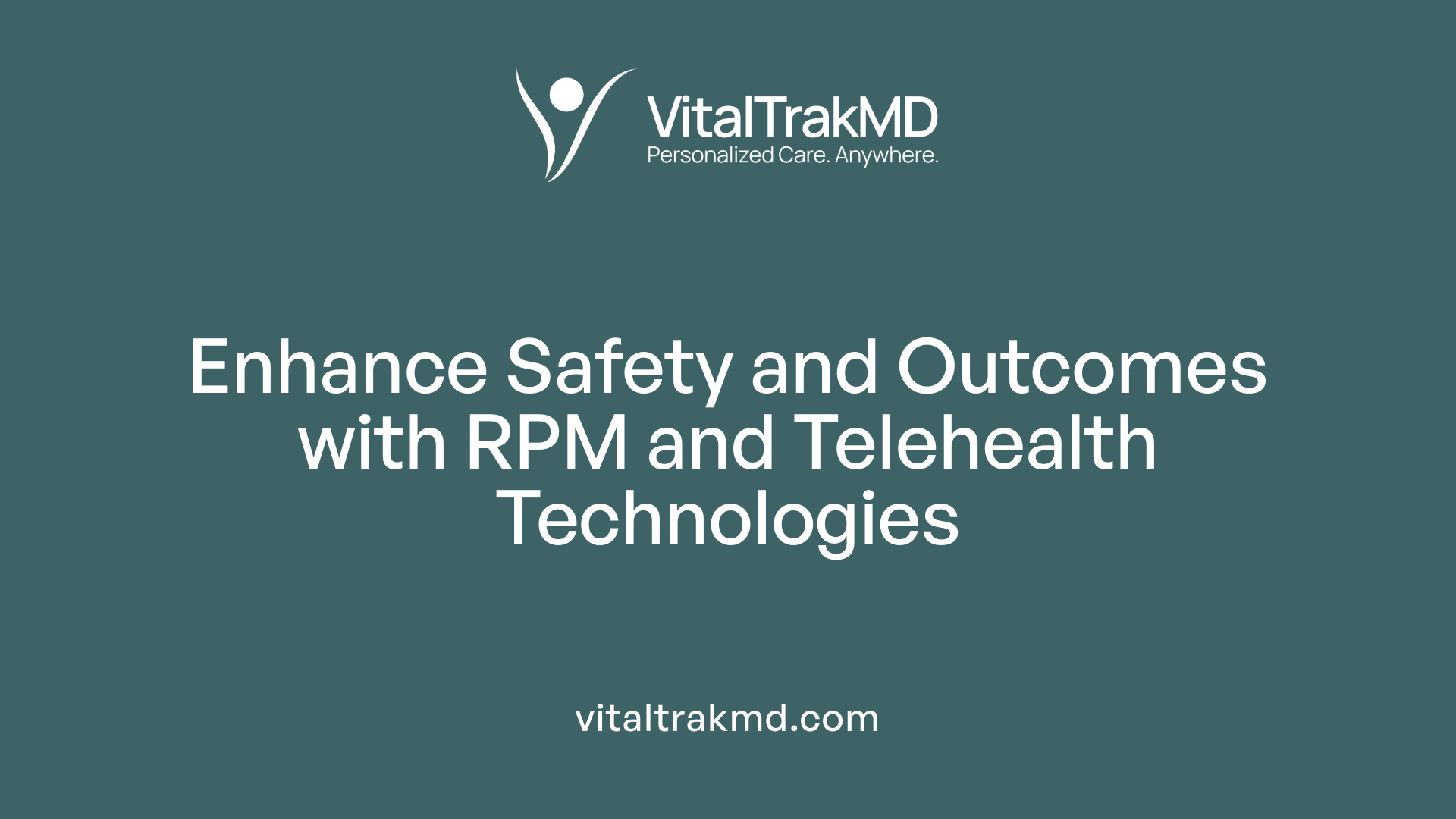 Remote patient monitoring (RPM) utilizes various devices such as blood pressure monitors, glucometers, pulse oximeters, and wearable sensors to continuously collect health data. These tools enable healthcare providers to keep a close eye on vital signs and biomarkers, which is especially valuable for older adults managing chronic conditions like hypertension, diabetes, and heart disease.
Remote patient monitoring (RPM) utilizes various devices such as blood pressure monitors, glucometers, pulse oximeters, and wearable sensors to continuously collect health data. These tools enable healthcare providers to keep a close eye on vital signs and biomarkers, which is especially valuable for older adults managing chronic conditions like hypertension, diabetes, and heart disease.
By integrating data from RPM devices with telehealth systems, clinicians can detect early signs of medication non-adherence and adverse effects. This proactive approach allows for timely treatment adjustments, reducing the risk of complications and medication errors. For example, if a blood pressure cuff transmits abnormal readings, physicians can intervene before a crisis occurs.
Technologies supporting remote monitoring include Bluetooth-enabled biometric devices that securely send data to medical platforms. These platforms often utilize encryption and privacy compliance measures to protect sensitive information. Real-time data transmission facilitates prompt responses, ultimately improving safety and health outcomes.
The benefits extend beyond safety; RPM can lead to fewer hospital readmissions, shorter stays, and lower healthcare costs. It also encourages elderly patients to engage actively in their healthcare by providing immediate feedback and tracking their health status, which enhances medication adherence.
In summary, RPM devices play a crucial role in improving medication safety by enabling continuous, remote oversight of chronic conditions. They support early intervention, enhance patient involvement, and contribute to a more efficient, patient-centered healthcare system, especially for the aging population.
Smart Medicine Reminder Kits for Seniors
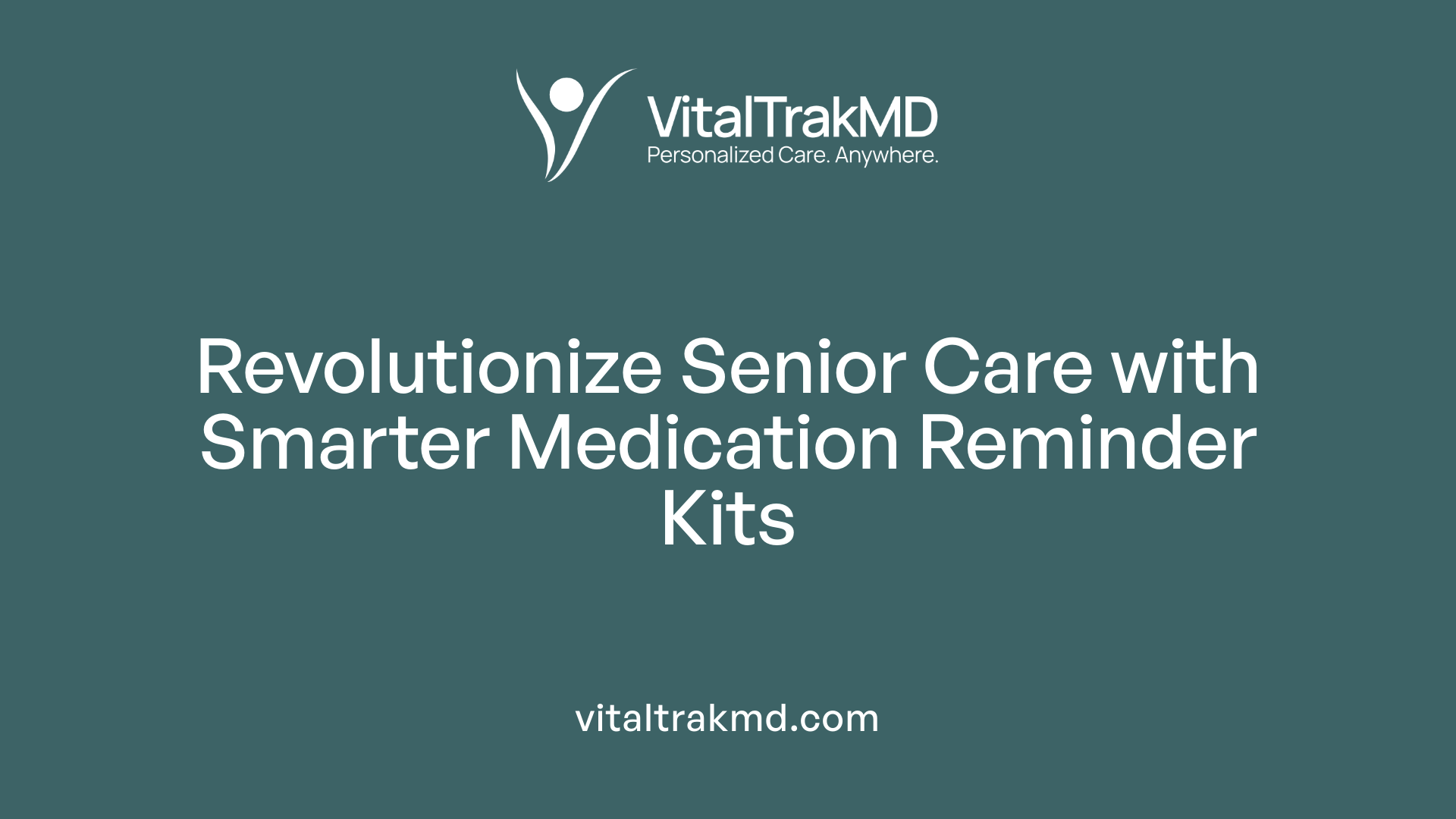
Features of medication reminder systems combining health monitoring and alerts
Innovative medication reminder kits for seniors are designed to enhance adherence while supporting overall health monitoring. These systems typically incorporate multiple functionalities to serve specialized needs of older adults.
One prominent feature is the integration of medication reminders with health assessment sensors. The system uses a GSM module to automatically call patients when doses are missed, ensuring prompt action. It also links with a wireless mobile app, allowing users or caregivers to input medication schedules easily.
Health sensors embedded within these kits measure vital signs such as heart rate (using MAX30100 sensors), oxygen saturation (SpO2), body temperature (via LM35 sensors), environmental temperature, humidity (using DHT11 sensors), and detect smoke presence (with MQ-2 sensors). These measurements help in continuous health assessment and early detection of potential issues.
The system’s scheduling component employs real-time clock modules that align medication times with current time, reducing the risk of missed doses. The device’s design aims for simplicity, ensuring that even users with limited tech experience can operate the system effectively.
This low-cost prototype was tested over a month, demonstrating reliable performance in real-world settings. Its primary goal is to reduce medication errors, especially for seniors with weakening memory or cognitive challenges.
Beyond medication management, the kit promotes safety with features like alerts for environmental hazards (smoke detection) and health warnings through real-time data transmission. Its holistic approach supports independent living and helps caregivers monitor health remotely.
How can remote monitoring technology prevent missed medications in seniors?
Remote monitoring technology plays a crucial role in preventing missed medications among older adults. It achieves this through real-time tracking of medication intake and proactive alerts. Electronic pill dispensers and smart medication packs record whether doses are taken and notify users or caregivers if any scheduled doses are missed.
Advanced tools, such as ingestible sensors, confirm medication ingestion directly, though privacy concerns still need addressing. Wearable devices and smartphone apps provide reminders that prompt the user when it’s time to take medications.
Moreover, AI-driven applications analyze adherence patterns and send alerts to caregivers or healthcare providers when irregularities occur. These interventions enable timely follow-up, reducing health risks stemming from inconsistent medication use.
User-centered digital solutions aim to overcome barriers like alert fatigue and low health literacy. Features such as customizable notifications, clear instructions, and motivational messages improve usability among seniors.
Overall, these technologies bolster medication safety, increase compliance, and contribute to better health outcomes by ensuring timely support and accurate documentation.
What strategies can be employed to implement remote monitoring solutions in senior care settings?
Successful integration of remote monitoring solutions in senior care requires strategic planning and collaboration. Key strategies include embedding these tools seamlessly into existing healthcare workflows to ensure smooth adoption.
Training is essential for staff, caregivers, and even patients to ensure they understand how to operate devices properly and interpret data. Customizing monitoring systems to suit individual health needs—such as adjusting sensors or alert protocols—fosters engagement and effectiveness.
A reliable technological infrastructure supports end-to-end data transmission securely, maintaining patient privacy and data integrity. Addressing digital literacy barriers involves selecting user-friendly, nonintrusive devices and providing tailored educational support.
Affordability and accessibility should also be prioritized, with options like subsidized programs or simplified interfaces tailored for older adults. Building strong collaborations among healthcare providers, technology developers, and caregivers supports system alignment, clinical integration, and ongoing improvement.
By combining these approaches, healthcare systems can maximize the benefits of remote monitoring, improving adherence, safety, and health outcomes for seniors.
Research Evidence Supporting Remote Monitoring Efficacy
Studies have consistently demonstrated that remote monitoring solutions significantly reduce hospitalizations, medication errors, and improve medication adherence among seniors and patients with chronic health conditions.
One notable example is a study involving high-risk individuals identified through the LACE index, which predicted their risk of readmission. The use of digital health devices for daily vital sign and symptom monitoring resulted in a 59% reduction in hospitalizations within six months. Such systems enabled early detection of health deterioration, allowing healthcare providers to intervene promptly. This proactive approach minimizes the likelihood of adverse health events related to medication mismanagement or condition exacerbation.
Research shows that remote patient monitoring (RPM) enhances medication safety by providing continuous oversight and reminding patients to adhere to prescribed regimens. For instance, digital tools with alerts and real-time health data collection help prevent missed doses and incorrect medication intake. They foster improved communication between patients and healthcare teams, which further reduces treatment errors.
Furthermore, studies indicate that RPM not only minimizes medication-related problems but also contributes to safer prescribing practices, supporting better overall health outcomes. In hospital settings, RPM has been linked to lower readmission rates and decreased medication errors, demonstrating its effectiveness in real-world scenarios.
Long-term benefits of RPM for seniors include sustained enhancement in medication adherence, which is crucial given the complex regimens many elderly patients face. Continuous monitoring helps detect subtle health changes early, enabling timely adjustments that prevent complications.
Additionally, data suggest that remote medication management fosters independence and confidence among older adults, reducing their reliance on frequent medical visits. This autonomy improves their overall quality of life and helps contain healthcare costs by avoiding unnecessary hospital stays.
| Study Focus | Outcomes | Additional Notes |
|---|---|---|
| Hospitalization reduction | 59% decrease over six months | High-risk patients post-discharge |
| Medication error reduction | Improved adherence and safety | Continuous oversight and alerts |
| Patient engagement | Increased independence and confidence | Real-time communication and data |
In sum, the accumulated evidence underscores remote monitoring as a powerful tool to improve medication safety, prevent hospitalizations, and support elder independence in managing their health.
Supporting Activities for Safer Medication Use in Seniors

What activities improve medication management in seniors?
Effective medication management in older adults involves multiple coordinated activities. First, maintaining accurate, comprehensive, and current medication lists that include prescriptions, over-the-counter drugs, vitamins, and herbal supplements is essential. Regular reconciliation—reviewing and updating medications—helps identify discrepancies such as duplicate drugs or omitted therapies.
Educational efforts are also vital. Providing written instructions, verbal counseling, and addressing questions ensure seniors understand why they are taking each medication, proper dosages, and timing. Visual aids like large-print labels and easy-open containers accommodate physical limitations such as poor vision and limited grip strength.
Storage modifications can improve safety and adherence. Using pill organizers, blister packs, or medication trays helps organize doses, reducing the risk of errors. Proper storage—away from humidity, heat, or children—preserves medication integrity.
Establishing daily routines—taking medications at the same time each day—creates consistency. Involving family members or caregivers in medication oversight offers additional support, especially for those with cognitive or physical impairments.
Open communication with healthcare providers ensures prescriptions stay appropriate, minimizing harmful interactions or unnecessary medications. These combined activities promote safer, more effective medication use and support overall health.
What human factors influence medication adherence in seniors?
Several human factors impact seniors' ability to stick to their medication regimens. Cognitive capacity, including memory and understanding of treatments, plays a significant role. Older adults with memory lapses or confusion may forget doses or take medications incorrectly.
Physical impairments—such as arthritis, tremors, or diminished grip strength—can make opening containers and manipulating pills difficult. This physical limitation highlights the importance of accessible packaging and aids.
Understanding the purpose of medications influences adherence. Misbeliefs, side effect worries, or perceiving medications as unnecessary can reduce compliance.
Emotional attitudes also matter. Fear of side effects, mistrust in the healthcare system, or feelings of hopelessness can hinder consistent medication use.
Strategies to address these human factors include simplifying medication regimens, using visual and tactile aids, providing clear and comprehensible instructions, and involving caregivers or family members in medication management. Such approaches help ensure safety, boost adherence, and improve health outcomes for seniors.
Innovations and Future Directions in Remote Monitoring
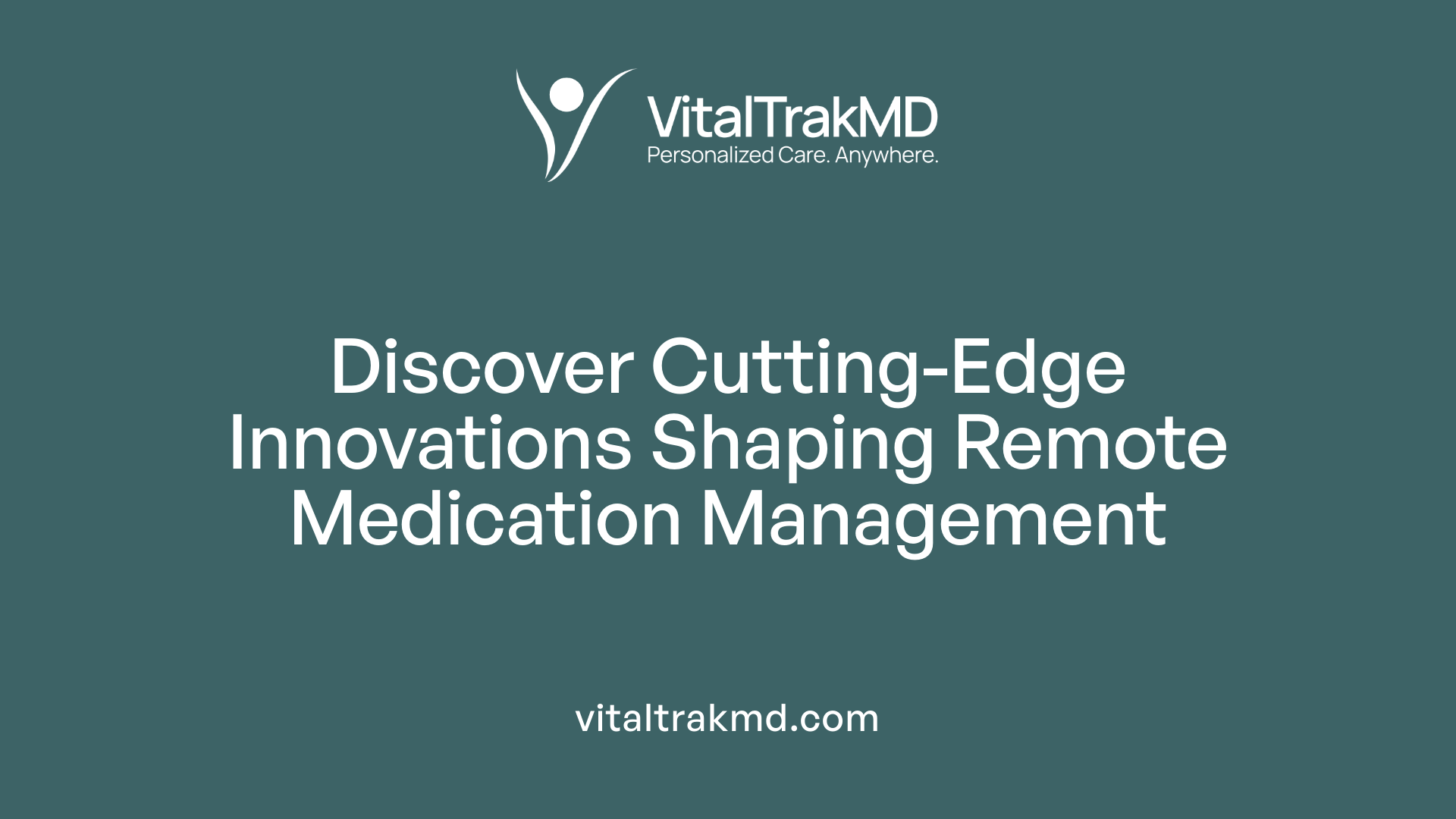
What innovations are shaping the future of remote medication management for seniors?
Emerging advancements are transforming elderly healthcare through the integration of artificial intelligence (AI), advanced sensors, and personalized strategies. AI-driven predictive analytics are becoming central in anticipating health issues before symptoms manifest, allowing for earlier interventions.
Ingestible sensors are another breakthrough, providing high-accuracy medication verification directly within the body. These tiny devices confirm medication ingestion in real-time, reducing errors linked to forgetting doses or mismanagement.
Wearable sensors integrated with AI algorithms enable continuous health monitoring tailored to individual needs. These systems collect data on vital signs such as heart rate, oxygen saturation, and activity levels, helping clinicians adjust treatments dynamically.
Efforts are also focused on developing smarter, user-friendly devices that address barriers like limited technological literacy. Improving device intuitiveness and privacy safeguards encourages greater adoption among seniors.
Future platforms will likely combine remote monitoring with expanded telehealth services, creating comprehensive care ecosystems. Virtual consultations paired with continuous data review aim to deliver seamless, personalized healthcare experiences for older adults.
How can digital health tools evolve to better serve the elderly in medication management?
Digital health tools have significant potential for evolution by prioritizing simplicity, accessibility, and security. Incorporating voice-activation and AI chatbots can assist seniors with limited dexterity or cognitive challenges, making interactions more natural.
Adaptive learning algorithms can personalize medication reminders, education, and support, aligning with individual routines and preferences. This customization enhances adherence and makes management less burdensome.
Enhanced security features will ensure sensitive health data remains protected, alleviating privacy concerns that hinder technology acceptance.
Interoperability among various devices and healthcare systems can facilitate comprehensive health insights. Integrated platforms that synthesize data from wearable sensors, electronic health records, and medication management apps allow for more accurate monitoring and timely adjustments.
Regular software updates, user education efforts, and caregiver involvement will ensure these tools evolve alongside technological advances and user needs. Together, these innovations aim to empower elderly individuals with reliable, accessible, and personalized medication management support.
A Future of Safer, Smarter Elderly Care
Remote monitoring is revolutionizing medication management for seniors by combining technological innovation, personalized care, and proactive health strategies. As new systems develop and existing platforms improve, older adults can enjoy safer, more independent lives with fewer missed medications, reduced hospitalizations, and enhanced safety. Widespread adoption of these technologies, supported by ongoing research and stakeholder collaboration, promises a future where elderly patients receive more effective, accessible, and dignified care.
References
- Medication adherence support of an in-home electronic medication ...
- The Extensive Approach to Remote Patient Monitoring for Elderly ...
- A smart medicine reminder kit with mobile phone calls and some ...
- Medication Management of the Community-Dwelling Older Adult
- Getting Seniors to Accept Remote Patient Monitoring - RemetricHealth
- Effective Medication Management for Seniors
- Exploring Health Care Professionals' Perspectives on the Use of a ...
- How Remote Medication Management Is Helping Reduce ...
- "Efficacy of Telehealth Modalities in Medication Adherence for Older ...
- Smart Medication Management: Key to Better Health in Older Adults
Recent articles
Want to Feel Better and Live Healthier?
Join hundreds of patients taking control of their health with personalized care that fits their life – not the other way around.
Rated 4.8/5 by 32+ customers



